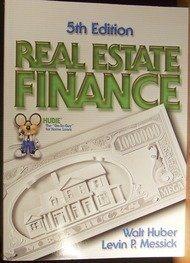Question
You are an employee of University Consultants, Ltd., and have been given the following assignment. You are to present an investment analysis of a new
You are an employee of University Consultants, Ltd., and have been given the following assignment. You are to present an investment analysis of a new small residential income-producing property for sale to a potential investor. The asking price for the property is $2,500,000; rents are estimated at $400,000 during the first year and are expected to grow at 3 percent per year thereafter. Vacancies and collection losses are expected to be 10 percent of rents. Operating expenses will be 35 percent of effective gross income. A fully amortizing 70 percent loan can be obtained at 11 percent interest for 30 years (total annual payments will be monthly payments *12). The property is expected to appreciate in value at 3 percent per year and is expected to be owned for five years and then sold.
Task 1: Concepts and techniques important in the analysis of real estate income property
(a) What is the first-year debt coverage ratio?
(b) What is the terminal capitalization rate?
(c) What is the investors expected before-tax internal rate of return on equity invested (BTIRR)?
(d) What is the NPV using a 14 percent discount rate? What does this mean?
(e) What is the profitability index using a 14 percent discount rate? What does this mean?
Task 2: How taxes affect the value of real estate versus other investments
You are still an employee of University Consultants, Ltd. The investor tells you she would like to know how tax considerations affect your investment analysis. You determine that the building represents 90 percent of value and would be depreciated over 39 years (use 1/39 per year). The potential investor indicates that she is in the 36 percent tax bracket and has enough passive income from other activities so that any passive losses from this activity would not be subject to passive activity loss limitations. Capital gains from price appreciation will be taxed at 20 percent and depreciation recapture will be taxed at 25 percent.
(a) What is the investors expected after-tax internal rate of return on equity invested (ATIRR)? How does this compare with the before-tax IRR (BTIRR) calculated in Task 1?
(b) What is the effective tax rate and before-tax equivalent yield?
(c) How would you evaluate the tax benefits of this investment?
(d) Recalculate the ATIRR in part (a) under that assumption that the investor cannot deduct any of the passive losses (they all become suspended) until the property is sold after five years.
Step by Step Solution
There are 3 Steps involved in it
Step: 1

Get Instant Access to Expert-Tailored Solutions
See step-by-step solutions with expert insights and AI powered tools for academic success
Step: 2

Step: 3

Ace Your Homework with AI
Get the answers you need in no time with our AI-driven, step-by-step assistance
Get Started


